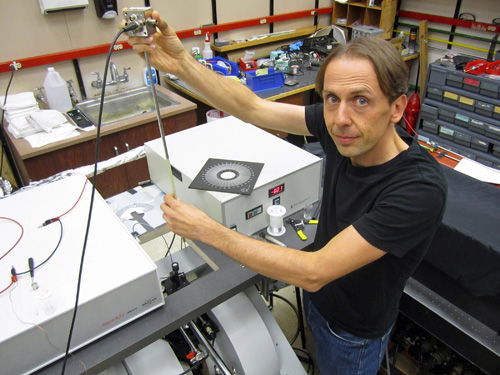
University of Utah physicist Christoph Boehme works in his laboratory on an apparatus used in a new study that brings physics a step closer to “spintronic” devices such as superfast computers, more compact data storage devices and more efficient organic LEDs or OLEDS than those used today for display screens in cell phones, computers and televisions. The study, published in the Sept. 19 issue of the journal Science, showed the physicists could read the subatomic “spins” in hydrogen nuclei and use the data to control current that powers light in a cheap, plastic LED, or OLED, under practical operating conditions. Photo Credit: Lee J. Siegel, University of Utah
(Visited 61 times, 1 visits today)
